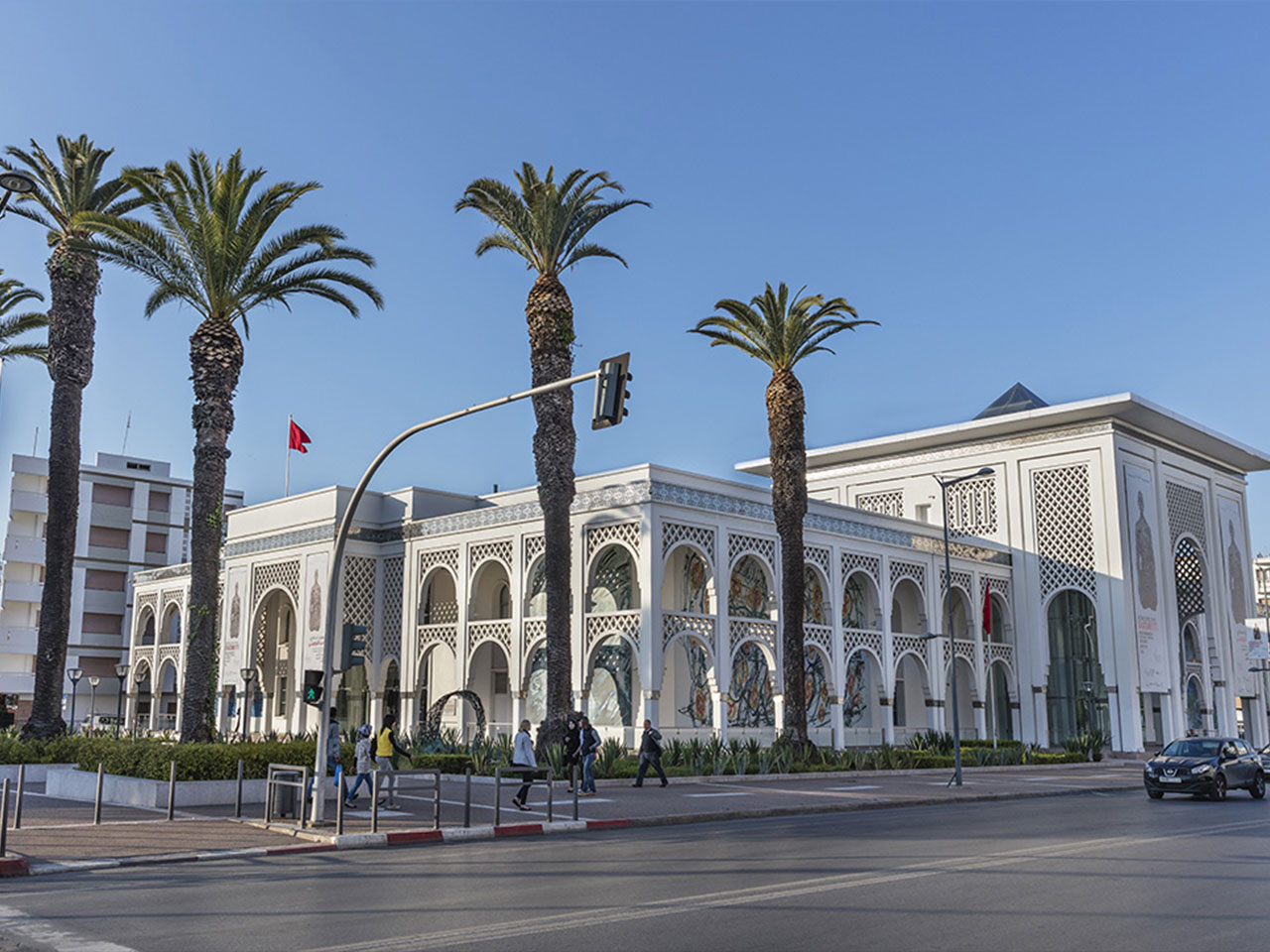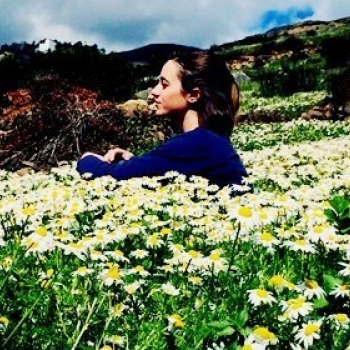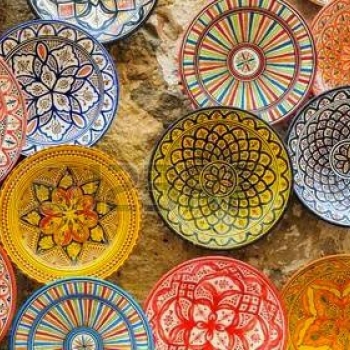Rabat tour
Hosting you is a delight
GLOBAL MOROCCO EXPLORATION SHORT TOURS_ RABAT
Rabat, city of elegance with majestic beauty
Rabat is the capital of Morocco; a modern town that has conserved all its authenticity and historical grandiose. It stands arrogantly at the mouth of the River Bouregreg with its colorful port. This imperial city is proud of its heritage, lives and breathes among wide boulevards and luxuriant parks. It is Morocco’s political and administrative center containing the royal palace and the embassies and several edifices dating back to antiquity. Likewise, Rabat is the cultural capital of Morocco hosting major international festivals. Its twin sister Sale lies nearby preserving the memory of past days, leading you off into the maze of its medina in discovery of its enigmatic past.
This route is fully customizable
- DAY 1 RABAT
-
Pick up at Rabat airport and drive to your boutique Riad in medina. After a while start your visit and learn about the glorious history of Rabat dating to the 8th century.
Start your visit by the medina which takes its name from the Muslims who were expelled from Spain in 1609-1610 due to their religious beliefs. Wander through Andalusian wall and you find yourself in rue Souiks lined up with shops vending traditional craftwork. Visit Souk-es-Sebat, a district of dealers of fine leather goods, fabric sellers and bazaars. Continue to Rue des Consuls, the busiest in the medina, lined up with craftsmen’s workshops and fabric and carpet-seller’s stalls. Here each Thursday mornings, you can witness the Rbati carpet auction.
Rue des Consuls has a charming story to tell. From the 17th century up until 1912, all diplomats and representatives of foreign powers lived in this famous street, putting them just a stone’s throw from the slave market at its far end, where they could buy prisoners taken by pirates to be sold at auction. From the end of the 16th century, the city, under the name of Salé-le-Neuf, included Rabat and excelled at its main activity – piracy.
Captured sailors were sold as slaves to wealthy families in the region. Christians were luckier, as they could be brought back by their countries’ diplomats, who had a budget available to them for this very purpose. The taking of Christian ships was the main source of Salé’s income, and it became Morocco’s leading port, keeping on with its pirating activity and continuing to make foreign ships tremble for several centuries.
Have your lunch in a nice restaurant offering Rbati delicious food.
Continue your visit to The Oudaya Kasbah a haven of peacefulness, with its flower-filled little streets, Andalusian garden and Moorish café. The Oudaya gateway is built of dressed stone and is regarded as one of the jewels of Almohad art. Most of the remains still to be seen date back to the 12th century, and the Kasbah contains Rabat’s oldest mosque. Its minaret, adorned with small decorative arcades, is most probably the work of one of the first Alaouite sovereigns. From the ocean side of the old semaphore-station platform at the end of the main street, you can enjoy superb panoramic views over Salé and the Bouregreg Estuary. In the Kasbah’s main square, a warehouse built in the late 18th century now accommodates a cooperative where you can watch girls at work weaving carpets.
The Oudaya museum was renovated in 1995 and is housed in a residence built for Moulay Ismail between 1672 and 1694, and in which the sultan stayed during his visits to Rabat. The museum exhibits rich and varied collections of jewellery, testimony to the extraordinary expertise of Morocco’s craftsmen. The museum is located also in lush garden of an Andalusian style
Later, your driver will take you to visit Hassan Tower. The ruins of the Hassan Tower bear witness to the size of what was to have been one of the largest places of worship anywhere in the Muslim world. Its construction was abandoned upon the death of its founder in 1199, and the Lisbon earthquake in 1755 caused further damage. The mosque comprised a great courtyard laid out over deep, restored cisterns and reaching to the foot of the minaret, and an immense hypostyle room whose 312 columns and 42 marble pillars were arranged to form nineteen naves, not counting its lateral porticos. It was on this site that the Mohammed V Mausoleum was built, in fitting tribute to the Nation’s liberator.
Visit also The Mohammed V Mausoleum whose design and decoration take one’s breath away. This masterpiece of traditional Moroccan art, with its painted woodwork, sculpted plasterwork and marble, and carved bronze, required all the know-how of the Kingdom’s master craftsmen. Mohammed V’s tomb is carved from a block of white onyx and stands in the center of the edifice’s lower level. Today, his two sons, the late King Hassan II and Prince Moulay Abdallah, rest in peace alongside him.
B&B accommodation in a boutique Riad in Oudaya district
DAY 2 : Rabat- Chellah Necropolis – Sidi Bouknadel Exotic gardens
Rise and have your breakfast and drive to the Chellah Necropolis. It is located about 2 km from the city center and is made up of the necropolis itself and the ancient city of Sala. The ruins, with their omnipresent birdlife, nesting storks and wild vegetation is one of Rabat’s most attractive landscapes. Protected by an impressive surrounding wall and accessed through a enormous gateway, the necropolis is an oasis of tranquility, a peaceful flower- filled garden containing an ablutions room, a zaouia with an oratory, the zellij adorned Merinid minaret, and a series of burial rooms.
After the visit go for lunch in Rabat new town the “city of flowers”, as Marshal Lyautey liked to call it. The fascinating gates that surround the Medina.
The wall that surrounds the old town is entered through 5 monumental stone gateways (Bab el Alou, Bab el Had, Bab Essoufara, Bab er-Rouah and Bab Zaërs). The largest of these Almohad creations is Bab er-Rouah, its monumental sculpted stone façade standing between two projecting towers. Its inner rooms have been restored and now serve as an exhibition gallery. It was here, in 1960, that the first collective exhibition by Moroccan painters was held, testimony to the burgeoning of artistic creation in the field of modern painting. 200 meters further on, the Ambassadors’ Gate (Bab Essoufara) gives access to the mechouar, a vast square where the major celebrations in honor of the King take place and where the royal
palace also stands
After enjoying your meal, your driver will take you to visit Sidi Bouknadel Exotic Gardens outside Rabat. A marvelously colorful journey around the world – natural gardens drawing inspiration from Brazil, Polynesia, Mexico, Andalusia and Peru. Rehabilitation of the Bouknadel Exotic Gardens in 2005 was carried out in full respect of the original project created in the early 1950s, and it’s a real pleasure to visit them and discover the countless different species that flourish in the 14 gardens, and to wander along the maze of footpaths, across suspended bridges and footbridges, observing the birds in their aviary and the fish and reptiles in the vivarium. The gardens are divided into three areas: a reception area, horticultural production area and finally the most impressive garden area. All through the garden there are secret passages, an aviary, waterfalls, swamps, pools, fountains, bridges and walkways to lead you through the various gardens.
Back to Rabat, B&B accommodation in boutique Riad
- DAY 3 The splendors of Salé
-
After your breakfast, drive to Rabat’s twin sister, Sale. This city may be viewed as the capital’s twin sister, but it owns a culture and identity that are all its own. Its glorious past as a pirate republic is increasingly evident with every step you take. Once within the walls that guarded Sale against attack by Spanish buccaneers in bygone days, you find yourself walking through an authentic medina, its narrow little streets covered with thuja wood.
From Souk Al-Ghazel square, the auction market, to Souk El-Merzouk, which specializes in jewellery, visitors wander from stall to stall in wonder.
On the city’s heights stand the great mosque and the Salé medersa. The mosque was originally built in the 11th century and was renovated and enlarged in 1196 by Sultan Yacoub El Mansour, who provided it with a majestic minaret and a monumental doorway decorated with foiled arches sculpted from Salé stone. The former Koranic school, the medersa, is now a museum. Its courtyard is a fine example of the sophistication of Hispano-Moorish art, with the convoluted geometrical patterns of its ceramic marquetry and its finely sculpted stuccowork. A stairway takes you up to the roof, where the terrace provides fine views over Salé and the Bouregreg river, with the Hassan Tower in the background.
Every year on the eve of Mawlid (the Prophet’s birthday), Salé dons its finest attire for the candle procession. Decorated floats parade through the city streets bearing the thirteen candles originally carried by the gondoliers who once ferried people back and forth across the Bouregreg. The procession has been organised for the last four centuries by a renowned religious brother hood, the Zaouia El Hassounia.
Visit sale and discover Salé pottery. Second only to carpet making, pottery making is regarded as one of the region’s oldest activities. Pieces of pottery have been discovered that date back to the earliest centuries of the Muslim era and to Roman times. Traditional know-how has been on the move since the opening of the El Oulja craftwork complex in Salé. Over sixty Oulja potters are at work competing with one another in ingenuity, adapting their products to today’s tastes without robbing them of their authenticity - colourful tajines, miniature ornaments, decorative vases, lamps, etc.
B&B accommodation in a boutique Riad in Rabat’s Oudaya.











